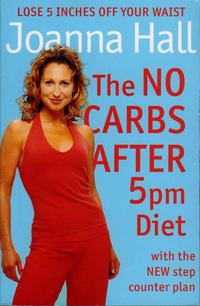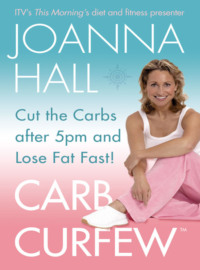
Полная версия
The GI Walking Diet: Lose 10lbs and Look 10 Years Younger in 6 Weeks
Why People Eat Emotionally
In my experience with both female and male clients, people often find themselves trapped in a cycle of stress-eat-stress, feeling helpless to change. Significant weight gain can occur as a result. There may be unconscious reasons for this behaviour. You may want to prevent other people getting too close, and feel that a layer of fat on the body may protect you. Or it can represent an attitude of needing to let go and be out of control when all other aspects of your life have to be neat and in order.
Case Study
A male client, a city high-flyer, had a major problem with emotional eating late in the evening. After working with him for a month it became clear that the nature of his professional position meant he had to be in control and on top of his game 110 per cent of the time. There was no room for a slip-up. This was big business with big rewards. The client was exceedingly good at his job, but it came at a price to his health – 5 stone of excess weight gain. Although he ate healthily, and in moderation at work, it was all part of his professional approach. When he came home it was almost as if some element of being out of control was needed as light relief from the constant responsibility and challenges. Ice cream was the answer, and his excessive eating of it represented a rebellious act against all the constraints in his day-to-day life. After discussing this, we established a physical activity plan that introduced an element of stress management, as well as letting him create a little slack in other areas of his life, so that the ice cream eating was not his only outlet to let off steam and take his foot off the throttle.
Emotional stress is real, and it doesn’t go away quickly or simply. However, recognizing it is the first step to taking action. If you feel you are susceptible to emotional stress, try completing the following questionnaire. Often, it can be easier to express sensitive issues on paper rather than in a face-to-face discussion. You may find that the very act of completing the questionnaire provokes thought and introspection, creating an awareness of the role stress is playing in your life.
Emotional Stress Questionnaire
Using the scale below, rate the following items/events according to how frequently they cause you emotional stress in the form of sadness, anxiety, fear, anger, depression, worry or guilt:
1 – Never
2 – Occasionally (a few times a month or less)
3 – Sometimes (one to three times a week)
4 – Often (three or more times a week)
5 – Always (daily or more)
















Answer the following questions:














How You Answered
The purpose of the first part of this questionnaire is to raise your awareness of certain issues or factors that can cause you stress. The second part is designed to highlight how you respond to specific events or situations.
Raising your level of regular physical activity – especially when it involves getting outside, as in the walking plan – has been shown to be a highly effective way to combat stress and limit depression. If your answers to the questionnaire highlighted several areas that could be improved, I’d encourage you to revisit the questionnaire after you have completed the six-week plan.
Breaking the cycle of emotional stress can be hard, but the number one message to remember is that exercise – specifically cardiovascular activity – is a powerful tamer of emotional stress. Your six-week walking plan will help you alleviate anxiety and depression and boost self-esteem. You will lose excess body fat and feel more confident. So not only are you going to look better, you will feel better too.
As well as exercising, allocating a little time for yourself to engage in some form of self-nurture that doesn’t involve food can have a positive impact on how you feel about yourself. You could, for example, take a class, read or relax in the bath …
3 Making it Happen – Changing Habits and Attitudes
Would you rather exercise for an hour a day – or be dead for 24 hours a day? Think about it…
If you are serious about losing weight and improving your health, you have to make some changes. Don’t panic – these don’t have to be drastic. However, these changes will essentially involve your existing habits and attitudes. At this stage in your life, your habits and attitudes will be well developed; you have had many years to put them into practice. Your habits may be so well grooved that they are a permanent feature of your life. They feel natural and you don’t give them much thought. For example, that mid-afternoon cup of tea and slice of cake or biscuit, your daily stroll with the dog, pint down the pub or G and T in the evening.
Get Active!
Evidence has shown that we tend to overestimate how physically active we are. As I explained in the Introduction, many of us believe we are physically active when in fact we are geographically or mentally active. You may need to rethink and readjust your habits. For instance, you may believe that your daily saunter with the dog is enough for your fitness. It’s not that everyday activities are ineffective: the Chief Medical Officer’s report, ‘Health of the Nation’, clearly stated that activities such as walking and gardening are sufficient to incur health benefits. The problem, however, is that they are often not vigorous enough to produce real health benefits, let alone weight loss.
In my research for this book, time and time again respondents believed they were ‘doing enough’ and that they were ‘physically active’. On closer examination, however, the intensity and progression needed to provide health improvements and weight loss were missing. Seventy per cent of the respondents said the changes they primarily sought were weight loss and health improvements. Despite putting in time and effort to improve their health, they didn’t achieve the results they sought. This lack of results creates a sense of frustration and an element of ‘what’s the use?’
So, on your six-week plan, you may need to develop some new habits and attitudes. The great news is that some of the core habits you need may already be in place, but just need a little tweaking.
Stop kidding yourself you are doing enough
and start making your actions count.
Your attitude can directly affect your health and ageing process, either positively or negatively. By adjusting your habits and educating your attitudes, the actions you take become not only achievable but also sustainable, making the whole ageing process a far more positive experience. Together, all your habits and attitudes can lead you to an achievable major change to your health, your weight and how you feel about yourself.
Small Steps for Big Change
To help you understand how you can make your existing habits and attitudes work for you, we need to introduce the concept of ‘small steps for big change’, which is central to the success of the six-week plan. This means that all the small actions you take, when put together and done progressively, can lead to a big change in your health and weight.
So often, I see people who are committed to improving their health but their actions fail. This is because their expectations are too great, and the changes they are trying to put in place are too drastic, unrealistic and unachievable for them. The six-week plan is about achievability, and the small steps for big change concept will be crucial to your success.
The six-week plan is about achievability and taking small steps to make a big change.
What Is a Habit?
A habit is a series of behaviours we have got used to doing in response to a specific cue. When trying to adopt a new, healthy regime, we can often come unstuck as we try to ditch too many habits too quickly, and implement new actions which bear no resemblance to our existing life. Such a large change can be daunting, difficult to maintain and often leads to us dropping all the good actions we need to take. Implementing new habits does involve some planning and thought, but the new habits I am going to ask you to develop need not be a world away from some of the ones you already have.
To help us make habit-changing an achievable process, we need to understand a little about how we form habits.
Habit-forming in the Brain
Understanding how the brain works provides us with an insight into our behaviour and how habits are formed. Here is a very simple overview of how habits are formed in the brain.
The brain is responsible for receiving, processing and sending out messages based on vast amounts of information. Message carriers called neurons need to travel to specific destinations in the brain so that the information can be acted upon. The message carriers reach their destinations by travelling along neural pathways; you can think of these as a mini transport system. There are millions and millions of neurons in the brain, all carrying messages and travelling along neural pathways. Different parts of the brain deal with different types of information. If the message goes to the wrong part of the brain or doesn’t reach its correct destination, the information gets lost, never to be acted upon.
At their destination, the neurons deliver their message, the information gets processed and an action may or may not occur. The brain gets very good at doing the simplest thing – taking a message and sending it along the most accessible neural pathway, delivering its message and creating an action. Some of these actions get so familiar that they become an automatic response, which requires no conscious thinking. When this happens you have given birth to a habit.
Other bits of information never reach their specific destination, so the part of the brain responsible for carrying out a particular action becomes dormant. Your brain may receive the same information again and again, but each time the message carrier gets lost in the smaller back roads of the brain, never to reach its destination.
Now you can start to see why taking small steps can be so effective. If your brain is already doing a similar action, the transport system taking the information will be established. Making a tweak to that action is easier for your brain to process and develop than trying to do a totally new action that requires the neuron message carriers to travel along unfamiliar neural pathways to a destination that may be dormant.
In this way, grooving the new habits necessary to help you lose weight and improve your health need not be that difficult. The trick is to piggy-back your new habit on to something you are already doing. For example, one of the most popular forms of physical activity is walking. We know from research studies that walking can improve your health and help you lose weight and keep it off, but the way you are walking at the moment may not be sufficient for you to reap these benefits. So the one simple habit you need to evolve may not be miles away from what you are already doing. All you need to do is address your walking technique and pace. You’ll find really simple and effective ways to do this in Learn Your Walking Technique.
Not all of your existing habits will be beneficial to your health, and it is likely that some of your habits may need to be ditched. However, eating the odd bar of chocolate or indulging in a cream tea once a week is not a bad habit – it’s when these ‘weekly’ habits are more of a daily habit that action needs to be taken.
Since we all have individual habits that directly affect our health and wellbeing, we need to apply a good dose of truthfulness. In my experience with clients, it can be very helpful to put these actions into context, and introduce an element of reality into how many times you actually complete the behaviour.
Habit Reality Check
Here’s what you do:


(Behaviour X) is something:












Please note: some of the above statements may need to be adapted according to the nature of the behaviour. However, the main purpose of this exercise is to draw your attention to some of your actions, which may be overlooked.
Case Study
Fifteen years ago I was running weight-management programmes in the US. One particular female client in her early 50s continually struggled with her weight. Each week, this client would swear to me that she’d had no sweets or treats at all and was following a healthy and moderate-calorie eating plan. Interestingly, however, on three separate occasions I saw her driving away from the building with one hand on the steering wheel and the other in a bumper packet of sweets. It’s not for me to say that this client was telling untruths, but sometimes you do need to give yourself a good reality check and get a grip of what’s happening. When I took this client through the Habit Reality Check, the fifth point was particularly pertinent.
Have I Left it Too Late?
So you’ve picked up this book and now you’re thinking: this is all really depressing; what’s the point? I might as well not bother; I’ve left it far too late. Well, before you crawl into Victor Meldrew mode, let’s get one thing straight:
NO – it really is never too late to start!!
So don’t even go there as an excuse – your efforts can make a real and positive impact on the quality of your life. In fact, most studies indicate that untrained people, even in the eighth decade of life, have not lost the ability to adapt to aerobic exercise training such as the walking plan. It’s never too late to improve, and now the time has come for you to prove it to yourself. The same basic exercise programmes used for young adults can be applied in later life, but there will be a slightly different emphasis upon what you do and how you progress, depending on your age and ability.
Конец ознакомительного фрагмента.
Текст предоставлен ООО «ЛитРес».
Прочитайте эту книгу целиком, купив полную легальную версию на ЛитРес.
Безопасно оплатить книгу можно банковской картой Visa, MasterCard, Maestro, со счета мобильного телефона, с платежного терминала, в салоне МТС или Связной, через PayPal, WebMoney, Яндекс.Деньги, QIWI Кошелек, бонусными картами или другим удобным Вам способом.







